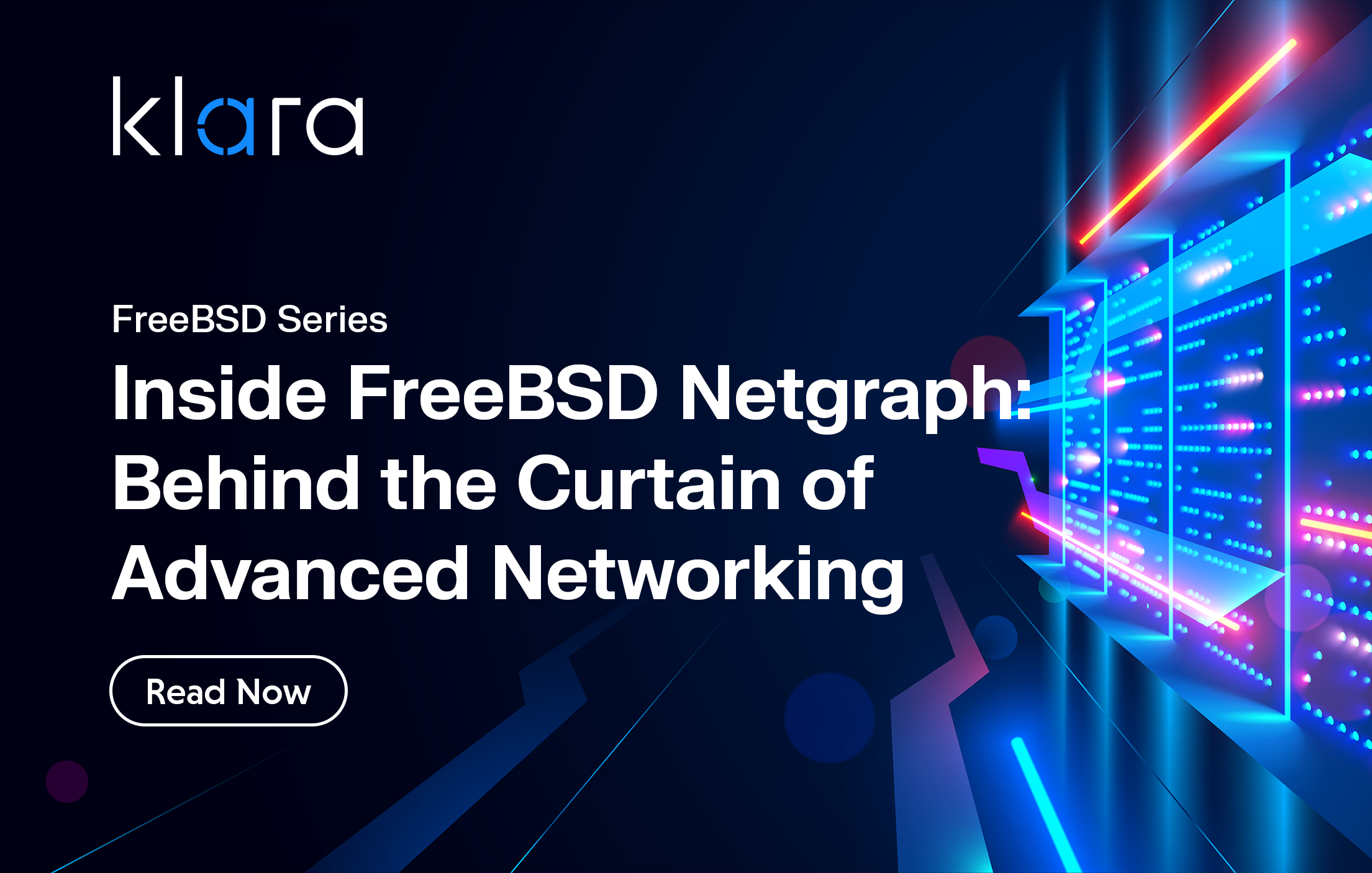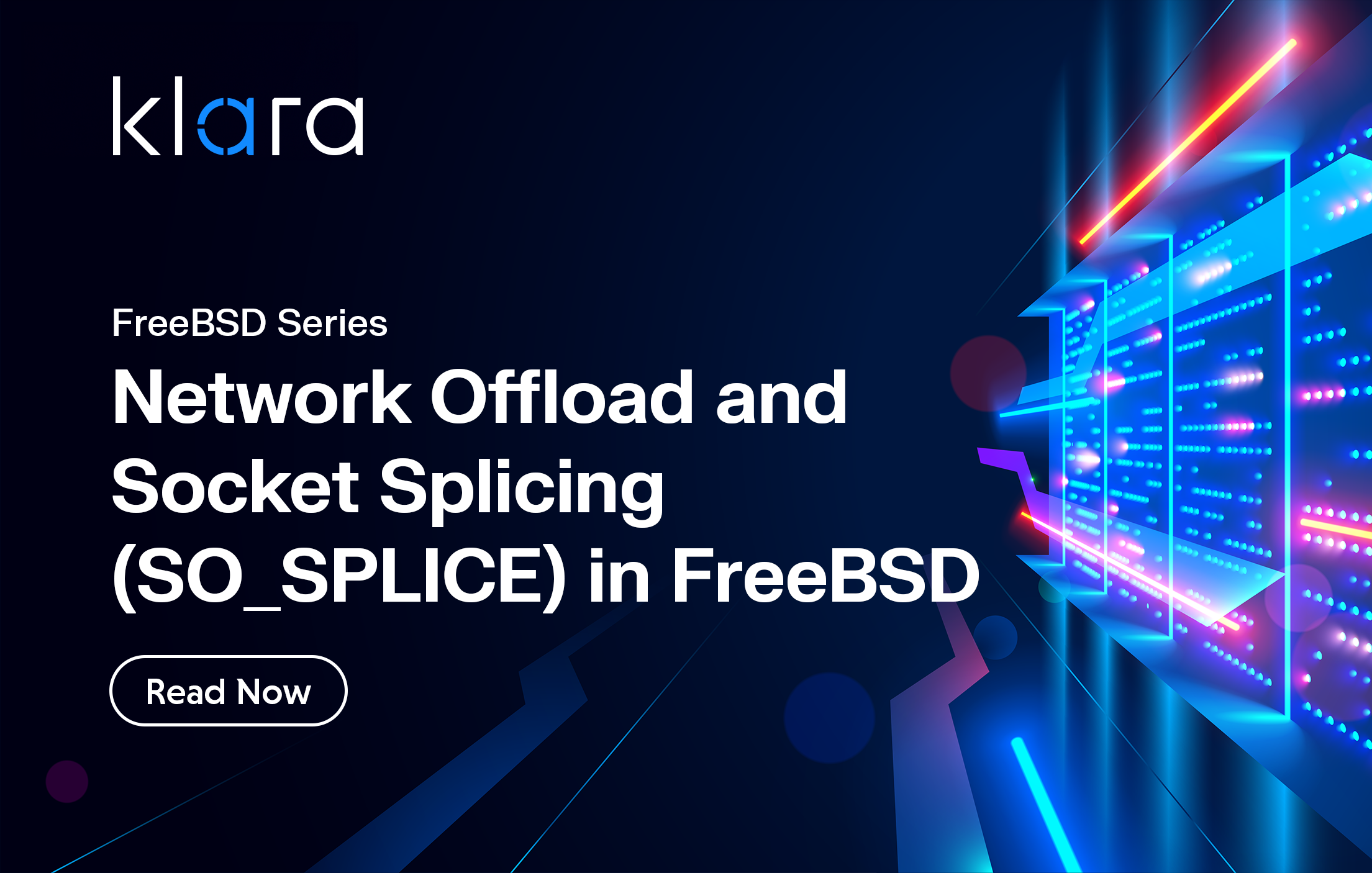Improve the way you make use of FreeBSD in your company.
Find out more about what makes us the most reliable FreeBSD development organization, and take the next step in engaging with us for your next FreeBSD project.
FreeBSD Support FreeBSD DevelopmentAdditional Articles
Here are more interesting articles on FreeBSD that you may find useful:
- FreeBSD Summer 2025 Roundup: Your Guide to Lock-In Free Infrastructure
- What We’ve Learned Supporting FreeBSD in Production (So You Don’t Have To)
- Maintaining FreeBSD in a Commercial Product – Why Upstream Contributions Matter
- Owning the Stack: Infrastructure Independence with FreeBSD and ZFS
- Inside FreeBSD Netgraph: Behind the Curtain of Advanced Networking
What is Dummynet?
Dummynet is the FreeBSD traffic shaper, packet scheduler, and network emulator. Dummynet allows you to emulate a whole set of network environments in a straight-forward way. It has the ability to model delay, packet loss, and can act as a traffic shaper and policer. Dummynet is roughly equivalent to netem in Linux, but we have found that dummynet is easier to integrate and provides much more consistent results.
Network emulation is a technique for creating virtual networks. It simulates the conditions of real networks in a more controlled lab-like environment. Using network emulation helps speed up testing and development by allowing the user to duplicate and replicate their findings. Emulation combined with traffic shaping allows you to build interesting networks. These networks can place limits on how much of the available capacity is used by one type of application or flow. With network emulation we can create strict environments for different types of traffic. It allows limiting bandwidth or artificially increasing round trip time so they don't overwhelm the network.
Network emulation gives you the power to test your applications and services. It allows testing in network conditions vastly different from the ones you currently have. This means that developers can get the full hellish experience of using a weak edge signal or the terrible interactivity of geostationary satellite delay. With emulation you can test a field deployment from the comfort of a warm lab. Network conditions vary greatly. Many types of network, especially those that use radio somewhere along the path, can vary in capacity and delay based on the time of day or even the weather.
Using Dummynet on FreeBSD
Dummynet is a feature of the ipfw firewall. It exposes three rule types: pipes, schedulers, and queues. These let you control how traffic is managed once it is fed into the emulator. A pipe emulates a network link. You can set characteristics on a pipe, and they will be enforced by the emulator. This allows you to limit the available bandwidth or impose additional delay on packets that traverse the pipe. Queues and scheduler rules allow us to use Dummynet as a traffic shaper. Packets fed into a queue are classified by their 5-tuple (protocol, source and destination IP and port). They are scheduled differently based on the algorithm and parameters provided.
How to Configure Dummynet for Traffic Shaping
To start using dummynet you need to load the ipfw and dummynet kernel modules. You should always experiment with firewall rules on a test machine, ideally one where you can easily get access to the console when you lock yourself out.
When testing rules, it can be helpful to change the ipfw default rule to accept rather than reject all traffic. This helps avoid lock out and removes some of the more perplexing forwarding issues. You can do this before loading the kernel module with the kenv utility. Alternatively, you can add a very late rule that allows all traffic through.
# kenv net.inet.ip.fw.default_to_accept=1
# kldload ipfw dummynetor
# kldload ipfw dummynet
# ipfw add 65534 allow any from any to anyTesting and Troubleshooting Dummynet Rules
ipfw is configured with a ruleset, a list of numbered rules from 1 to 65535. Packets are evaluated against the ruleset until a rule either drops the packet or passes the packet through. The first rule that matches is the winner and further processing stops. In ipfw rules you can use the actions deny or drop to stop packets and allow, accept, pass or permit to allow packets through.
When configuring network emulation (and firewalls generally) it is very important to have a good idea how you are going to test that the rules you have written are performing the actions you intend (and hopefully no other actions).
When performing network emulation you are primarily concerned with two parameters, the bandwidth available and the path delay. For testing delay you can use the hardy ping(8) command. ping will tell you the round trip time it experiences, helping you see how much delay there is in the network. Sometimes more usefully it will report all ICMP error messages it receives. This can be really helpful when an errant rule is rejecting traffic.
To measure the bandwidth available with the emulator (and normally before) you can use the iperf3(1) tool available from ports or packages. iperf3 is the third version of the iperf tool and it offers a whole host of features, and there are some public servers available that allow you to perform measurements to them. iperf3 is more automatable than the older iperf2 was and now offers json output so it can easily be integrated into automated test workflows.
Bandwidth and Delay Values for Typical Networks
The table below shows typical bandwidth and delay values for different types of network you may wish to emulate:
Name Downlink bandwidth Units Downlink delay (ms) Uplink bandwidth Units Uplink delay (ms)
Edge 240 Kbps 400 200 Kbps 440
3G 780 Kbps 100 330 Kbps 100
LTE 50 Mbps 50 10 Mbps 65
DSL 2 Mbps 10 256 Kbps 10
VDSL 50 Mbps 10 10 Mbps 10
Geo-Satellite 10 Mbps 325 2 Mbps 325
Bandwidth and Delay for Different Types of NetworkWhen configuring network emulation with ipfw using pipes, the pipe emulates a link with the given bandwidth, delay, loss, burst sizes and buffering characteristics. To use pipes with ipfw you first have to configure them, then add rules that feed traffic to the pipe. Pipes are typically used to enforce network conditions on an entire subnetwork, but you can use any of the filters in ipfw to control which traffic goes into the emulated link. Pipes are referred to by a number, which should not be confused with the ipfw rule numbers. You may wish to define a specific range of numbers that are used for pipes, and not create firewall rules with the same numbers, to avoid confusion. The ipfw pipe config command will use the default values for any parameter you don't specify when creating the pipe.
Setting Up a Virtual Network for Dummynet Experiments
For these tests you can use a FreeBSD host machine with bhyve running a FreeBSD guest VM. Add the guest's tap interface as a member to a bridge on the host.
# ifconfig tap creat
tap0
# ifconfig bridge create
bridge0
# ifconfig bridge0 inet 10.0.4.1/24 up
# ifconfig bridge0 addm tap0The bridge has the address 10.0.4.1 while the VM will have the address 10.0.4.2. Configuring bhyve is left as an exercise to the reader.
Setting Up Network Emulation
Measuring Baseline Network Characteristics with Ping and Iperf3
Before you do anything, use ping and iperf3 to measure the network characteristics from the VM guest to the host in your test network (you could do this to a public host you know, such as 1.1.1.1 or to one of the iperf3 test servers listed here).
$ ping -c 3 10.0.4.1
PING 10.0.4.1 (10.0.4.1): 56 data bytes
64 bytes from 10.0.4.1: icmp_seq=0 ttl=64 time=0.683 ms
64 bytes from 10.0.4.1: icmp_seq=1 ttl=64 time=0.615 ms
64 bytes from 10.0.4.1: icmp_seq=2 ttl=64 time=0.626 ms
--- 10.0.4.1 ping statistics ---
3 packets transmitted, 3 packets received, 0.0% packet loss
round-trip min/avg/max/stddev = 0.615/0.641/0.683/0.030 msRunning Bandwidth Tests with Iperf3
To run a bandwidth test you run iperf3 in server mode on your VM host:
$ iperf3 -sand run a default 10 second test from your guest VM to the host:
$ iperf3 -c 10.0.4.1
Connecting to host 10.0.4.1, port 5201
[ 5] local 10.0.4.2 port 54881 connected to 10.0.4.1 port 5201
[ ID] Interval Transfer Bitrate Retr Cwnd
[ 5] 0.00-1.00 sec 281 MBytes 2.35 Gbits/sec 0 1.19 MBytes
[ 5] 1.00-2.00 sec 365 MBytes 3.06 Gbits/sec 0 1.21 MBytes
[ 5] 2.00-3.00 sec 364 MBytes 3.05 Gbits/sec 0 1.21 MBytes
[ 5] 3.00-4.00 sec 373 MBytes 3.13 Gbits/sec 0 1.21 MBytes
[ 5] 4.00-5.00 sec 347 MBytes 2.91 Gbits/sec 0 1.21 MBytes
[ 5] 5.00-6.00 sec 366 MBytes 3.06 Gbits/sec 0 1.21 MBytes
[ 5] 6.00-7.00 sec 375 MBytes 3.15 Gbits/sec 0 1.21 MBytes
[ 5] 7.00-8.00 sec 371 MBytes 3.11 Gbits/sec 0 1.21 MBytes
[ 5] 8.00-9.00 sec 375 MBytes 3.15 Gbits/sec 0 1.21 MBytes
[ 5] 9.00-10.00 sec 373 MBytes 3.13 Gbits/sec 0 1.21 MBytes
- - - - - - - - - - - - - - - - - - - - - - - - -
[ ID] Interval Transfer Bitrate Retr
[ 5] 0.00-10.00 sec 3.51 GBytes 3.01 Gbits/sec 0 sender
[ 5] 0.00-10.03 sec 3.51 GBytes 3.00 Gbits/sec receiver
iperf Done.That looks like a great network, there is a ton of capacity (it is just a guest speaking to the VM host after all) and the delay is below 1ms and hardly varies at all. This setup might exist between machine in a data center or your house, but it isn't anything like what you will see from the Internet edge to the core.
Setting Up Pipes to Introduce Delays
Around 20 milliseconds of total delay (the round trip time that ping reports) is typical from many locations to services on the Internet. Lets set up pipes to delay all of the traffic from the guest VM by 10ms in each direction:
# ipfw add 00097 pipe 1 ip from 10.0.4.2 to 10.0.4.1
# ipfw add 00099 pipe 2 ip from 10.0.4.1 to 10.0.4.2
# ipfw pipe 1 config delay 10ms
# ipfw pipe 2 config delay 10msVerifying Delays in Network Traffic
With these commands all traffic from the guest to the hosts bridge is fed into pipe 1 and any traffic from the host to the bridge is fed into pipe 2. Each pipe only models one direction of the link, this can be very helpful if you are modelling a cellular network that has delays that are different in each direction. Lets test this config to see if it has the desired effect:
$ ping -c 3 10.0.4.1
PING 10.0.4.1 (10.0.4.1): 56 data bytes
64 bytes from 10.0.4.1: icmp_seq=0 ttl=64 time=19.661 ms
64 bytes from 10.0.4.1: icmp_seq=1 ttl=64 time=20.110 ms
64 bytes from 10.0.4.1: icmp_seq=2 ttl=64 time=20.225 ms
--- 10.0.4.1 ping statistics ---
3 packets transmitted, 3 packets received, 0.0% packet loss
round-trip min/avg/max/stddev = 19.661/19.999/20.225/0.243 msConfiguring Bandwidth Limits and Buffers
The delay is what we expect. Now lets configure a bandwidth limit in our network:
# ipfw pipe 1 config delay 10ms bw 50Mbit/s
# ipfw pipe 2 config delay 10ms bw 10Mbit/s
# iperf3 -c 10.0.4.1
Connecting to host 10.0.4.1, port 5201
[ 5] local 10.0.4.2 port 27352 connected to 10.0.4.1 port 5201
[ ID] Interval Transfer Bitrate Retr Cwnd
[ 5] 0.00-1.00 sec 2.94 MBytes 24.7 Mbits/sec 0 98.1 KBytes
[ 5] 1.00-2.00 sec 4.90 MBytes 41.0 Mbits/sec 10 66.5 KBytes
[ 5] 2.00-3.00 sec 4.34 MBytes 36.4 Mbits/sec 0 135 KBytes
[ 5] 3.00-4.00 sec 4.16 MBytes 34.9 Mbits/sec 8 115 KBytes
[ 5] 4.00-5.00 sec 4.32 MBytes 36.2 Mbits/sec 8 94.9 KBytes
[ 5] 5.00-6.00 sec 4.65 MBytes 39.0 Mbits/sec 8 49.5 KBytes
[ 5] 6.00-7.00 sec 4.33 MBytes 36.3 Mbits/sec 0 135 KBytes
[ 5] 7.00-8.00 sec 4.17 MBytes 35.0 Mbits/sec 8 115 KBytes
[ 5] 8.00-9.00 sec 4.41 MBytes 37.0 Mbits/sec 10 89.2 KBytes
[ 5] 9.00-10.00 sec 4.64 MBytes 38.9 Mbits/sec 0 146 KBytes
- - - - - - - - - - - - - - - - - - - - - - - - -
[ ID] Interval Transfer Bitrate Retr
[ 5] 0.00-10.00 sec 42.8 MBytes 35.9 Mbits/sec 52 sender
[ 5] 0.00-10.02 sec 42.6 MBytes 35.7 Mbits/sec receiver
iperf Done.
This has set a limit, but the TCP transfer that iperf3 is doing is not able to utilize the full link capacity. This is because there is not enough buffering configured on the link. Sizing buffers is a complicated field of study, but as a general rule you want one full Bandwith Delay Product (BDP, the bandwidth times the total delay) of buffering. If we configure this for the forward link it does much better:
# ipfw pipe 2 config delay 10ms bw 10Mbit/s queue 200kb
# ipfw pipe 1 config delay 10ms bw 50Mbit/s queue 1000kb
# ipfw pipe 1 show
00001: 50.000 Mbit/s 10 ms burst 0
q131073 1000 KB 0 flows (1 buckets) sched 65537 weight 0 lmax 0 pri 0 droptail
sched 65537 type FIFO flags 0x0 0 buckets 1 active
BKT Prot ___Source IP/port____ ____Dest. IP/port____ Tot_pkt/bytes Pkt/Byte Drp
0 ip 0.0.0.0/0 0.0.0.0/0 4679 4775549 12 16552 0 # iperf3 -c 10.0.4.1
Connecting to host 10.0.4.1, port 5201
[ 5] local 10.0.4.2 port 16845 connected to 10.0.4.1 port 5201
[ ID] Interval Transfer Bitrate Retr Cwnd
[ 5] 0.00-1.00 sec 3.60 MBytes 30.2 Mbits/sec 0 115 KBytes
[ 5] 1.00-2.00 sec 4.98 MBytes 41.8 Mbits/sec 0 165 KBytes
[ 5] 2.00-3.00 sec 5.12 MBytes 42.9 Mbits/sec 0 205 KBytes
[ 5] 3.00-4.00 sec 5.50 MBytes 46.1 Mbits/sec 0 241 KBytes
[ 5] 4.00-5.00 sec 5.56 MBytes 46.6 Mbits/sec 0 272 KBytes
[ 5] 5.00-6.00 sec 5.67 MBytes 47.6 Mbits/sec 0 300 KBytes
[ 5] 6.00-7.00 sec 5.60 MBytes 47.0 Mbits/sec 0 326 KBytes
[ 5] 7.00-8.00 sec 5.71 MBytes 47.9 Mbits/sec 0 350 KBytes
[ 5] 8.00-9.00 sec 5.69 MBytes 47.7 Mbits/sec 0 373 KBytes
[ 5] 9.00-10.00 sec 5.69 MBytes 47.7 Mbits/sec 0 394 KBytes
- - - - - - - - - - - - - - - - - - - - - - - - -
[ ID] Interval Transfer Bitrate Retr
[ 5] 0.00-10.00 sec 53.1 MBytes 44.5 Mbits/sec 0 sender
[ 5] 0.00-10.04 sec 52.7 MBytes 44.0 Mbits/sec receiver
iperf Done.Observing Network Behavior with VDSL-like Conditions
With that change you have a guest VM that with network conditions similar to a VDSL line. This has only scratched the surface of some of what can be done with dummynet as a network emulator. Dummynet can also be used as a packet scheduler and is able to make very interesting and useful networks.

Tom Jones
Tom Jones is an Internet Researcher and FreeBSD developer that works on improving the core protocols that drive the Internet. He is a contributor to open standards in the IETF and is enthusiastic about using FreeBSD as a platform to experiment with new networking ideas as they progress towards standardisation.
Learn About KlaraWhat makes us different, is our dedication to the FreeBSD project.
Through our commitment to the project, we ensure that you, our customers, are always on the receiving end of the best development for FreeBSD. With our values deeply tied into the community, and our developers a major part of it, we exist on the border between your infrastructure and the open source world.














